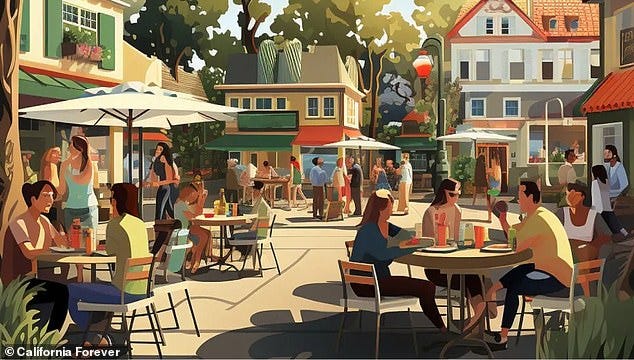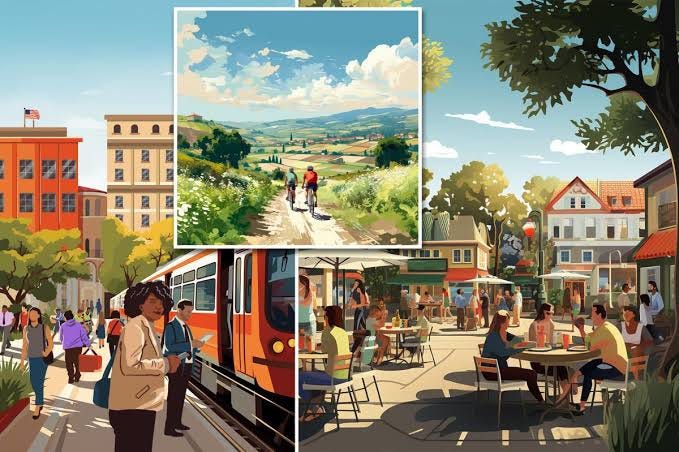Envisioning a Green Techno-Utopia: A Future of Sustainability
Written on
Chapter 1: The Case for a Green Techno-Utopia
In its most fundamental essence, what reason could there possibly be for anyone to oppose a green techno-Utopia? Aside from a few extreme politicians, wars, natural calamities, or errant AI, what could prevent a seamless transition to a future that is nearly 100% sustainable, circular, and immensely prosperous? The answer is: nothing.
With the advent of cost-effective solar, wind, and battery technology, we now have the tools to mitigate most climate challenges while providing us with more energy than we ever imagined. Additionally, innovations like electric vehicles (EVs), heat pumps, hydrogen solutions, and high-voltage direct current (HVDC) transmission are revolutionizing our energy landscape.
And let’s not forget the role of AI, robotics, and autonomous recycling systems. The potential is overwhelmingly positive—if we can steer clear of harmful AI and global conflicts. Isn't it somewhat absurd and childish to resist the idea of a techno-Utopia?
This transformation holds the greatest promise for both our planet and marginalized communities, who stand to gain immensely from such advancements while facing dire consequences if we fail to act.

Section 1.1: Understanding Techno-Utopia
Technology is often misinterpreted, and green technology is frequently misunderstood on purpose. The term “techno-Utopia” has become somewhat of a dirty word. However, the anticipated techno-Utopia that moderate futurists envision for the next decade or two encompasses a remarkable blend of green technology, artificial intelligence, and simplicity.
This future promises sustainability, widespread prosperity, and a harmonious relationship with nature. It allows for lifestyle choices—whether in urban or rural settings, sustainability can be appealing in both scenarios. Furthermore, the technology can be seamlessly integrated into our lives, almost going unnoticed.
We are talking about achieving 100% renewable energy. While it’s true that green technology has emissions during its production, these are significantly lower—around 50 times less—than the emissions from the systems they are set to replace.
By 2050, we could potentially revert global temperature rise to just 0.5°C. Imagine fully autonomous, clean electric vehicle taxis and robotic minibuses, along with automated recycling processes and clean manufacturing.

Section 1.2: The Role of Robotics in Local Economies
Imagine a thriving local economy supported by android-enabled small businesses. The beauty of androids is that they can be customized at a fraction of the cost of traditional manufacturing methods. By 2030, they could be available for significantly less than the price of a car.
While large-scale robotics will still dominate mass production for essential goods, incorporating androids and industrial robots allows for a revival of local manufacturing. This shift will return production from overseas—like China—back to local communities, enabling boutique businesses to flourish in this new landscape.

Section 1.3: A Sustainable Agricultural Future
Consider the potential economic boost for communities. The return of manufacturing jobs, bolstered by AI, will benefit local economies. While China will continue to thrive, it will no longer be the sole powerhouse.
There will be a significant market for handmade products, as not everyone will be seeking the cheapest option in a world that appears to threaten human relevance. Many will have the means and desire to invest in quality.
We will see the end of old-growth logging, a reduction in pollution from heavy chemical and mining industries, and the implementation of robotic-assisted clean-ups for past environmental damage.
Small-scale, diverse farming will make a comeback. Utilizing robotic assistance, we can practice efficient boutique farming without pesticides or herbicides. These robots can manage weeding, pest control, planting, watering, and harvesting, leading to a diverse agricultural ecosystem that reduces pest populations.
This return to multi-crop farming embodies the ideal of a green techno-Utopia. What’s not to love?

Chapter 2: The Dangers of Rejecting Technology
The prospect of achieving universal prosperity without technological advancements is bleak. While moderate de-growth strategies are wise—such as eliminating non-biodegradable plastic packaging—the extreme de-growth mentality poses significant risks.
This mindset is not only authoritarian but could also lead to a drastic economic downturn, with the most vulnerable individuals suffering first. Ultimately, our civilization may struggle to protect itself, even from existential threats like asteroids.
To argue against a techno-Utopia is, quite frankly, irrational. I welcome any debate on this topic, as always.
